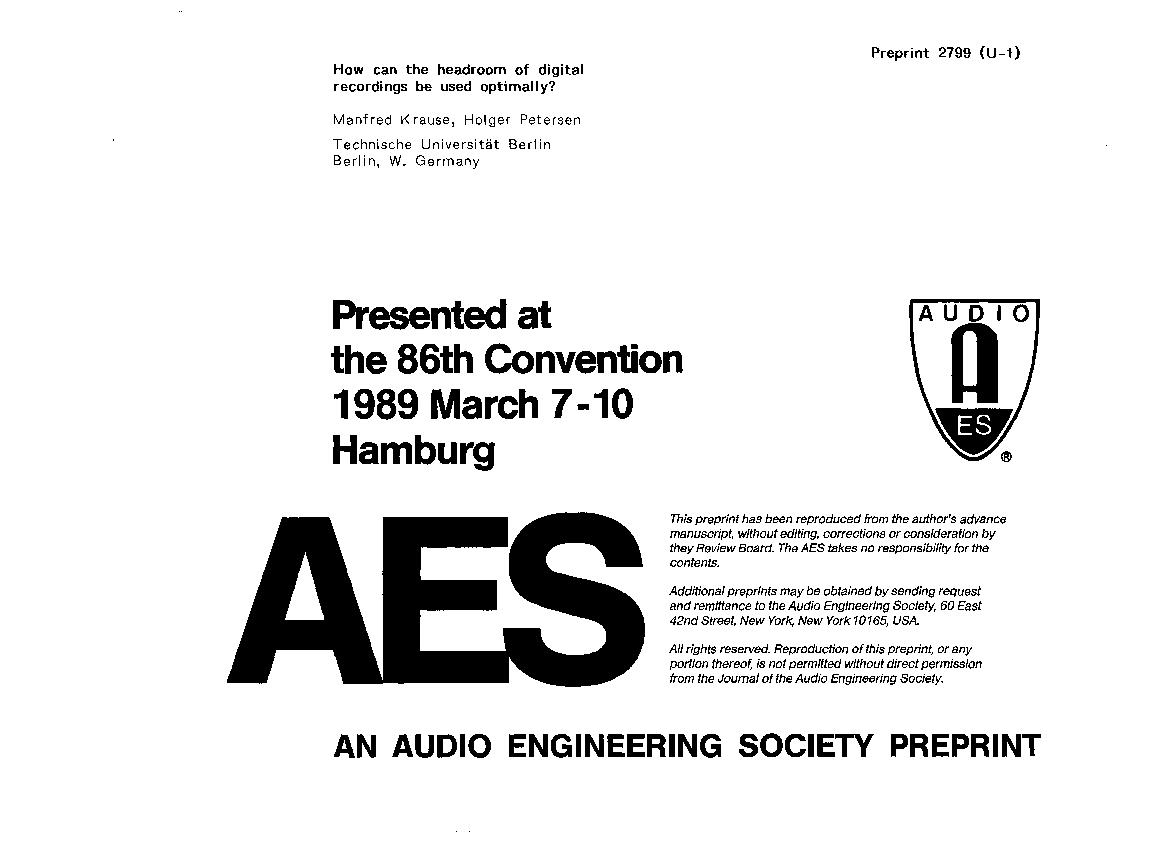Home / Publications / E-library page
You are currently logged in as an
Institutional Subscriber.
If you would like to logout,
please click on the button below.
Home / Publications / E-library page
Only AES members and Institutional Journal Subscribers can download
A precise knowledge of signal values and their statistical properties can be used to reduce the headroom requirements considerably. Investigations of the sample statistics of CD recordings, digital recordings, and "soft" clipped versions of digital recordings reveal that an appropriate use of nonlinear transfer characteristics gives only sporadic exceedings into the nonlinear range and thus distortions of only short durations which are inaudible. Using nonlinear transfer characteristics fit for peak signal values in advance by virtue of delay systems, the distortions can be reduced furthermore.
Author (s): Krause, Manfred; Petersen, Holger
Affiliation:
Technische Universitat Berlin, Berlin, W. Germany
(See document for exact affiliation information.)
AES Convention: 86
Paper Number:2799
Publication Date:
1989-03-06
Import into BibTeX
Session subject:
Recording (Postproduction/Broadcast)
Permalink: https://aes2.org/publications/elibrary-page/?id=5895
(399KB)
Click to purchase paper as a non-member or login as an AES member. If your company or school subscribes to the E-Library then switch to the institutional version. If you are not an AES member Join the AES. If you need to check your member status, login to the Member Portal.

Krause, Manfred; Petersen, Holger; 1989; How Can the Headroom of Digital Recordings Be Used Optimally? [PDF]; Technische Universitat Berlin, Berlin, W. Germany; Paper 2799; Available from: https://aes2.org/publications/elibrary-page/?id=5895
Krause, Manfred; Petersen, Holger; How Can the Headroom of Digital Recordings Be Used Optimally? [PDF]; Technische Universitat Berlin, Berlin, W. Germany; Paper 2799; 1989 Available: https://aes2.org/publications/elibrary-page/?id=5895